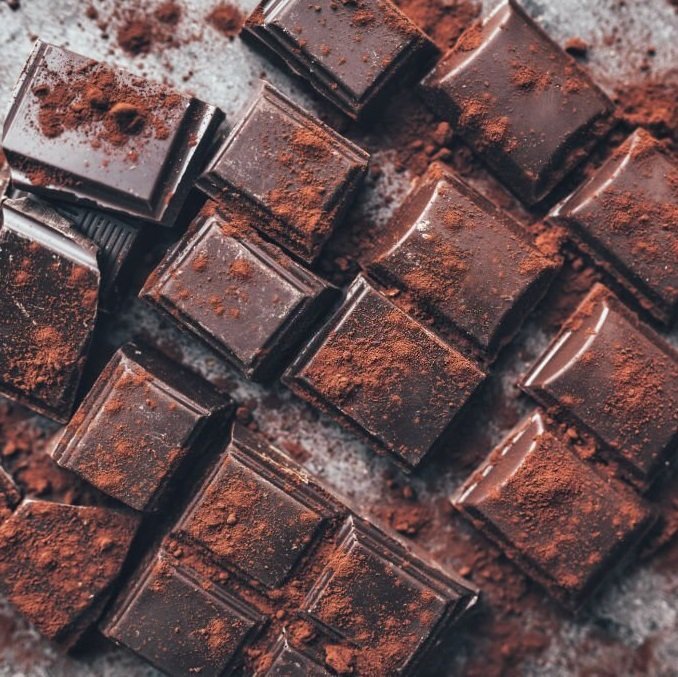The Bad and The Good Bitterness in Dark Chocolate
“Dark chocolate tastes too bitter!”
“Dark chocolate shouldn’t taste bitter!”
Technically, both affirmations are wrong. Dark chocolate shouldn’t have an unpleasant kind of bitterness, but it is definitely a bitter food.
Dark chocolate is a bitter food, but it shouldn’t taste unpleasant.
Many chocolate lovers don’t know that there are 2 kinds of bitterness in dark chocolate: a good one, that contributes to its loveable intensity, and a bad one, that makes it feel like a punishment.
Let’s see how they differ and how you can tell them apart during your tasting sessions.
What is Bitterness?
Bitterness belongs to the five tastes together with sweetness, sourness, saltiness, and umami.
Old research placed bitterness receptors in specific parts of the tongue, but that theory had long been debunked: bitter receptors have been found not only on all areas of the mouth, but also throughout the body in the gut, the nose, the lungs, and the brain.
Bitterness can be described as a physical sensation of sharpness, a pungent taste, similar to sourness, often described as the opposite of sweetness.
As chocolate tasters, whether we perceive bitterness as good or bad not only depends on the objective quality of the dark chocolate in front of us, but also on our genetic tolerance to bitterness and later adaptation.
Genetic differences make us perceive bitterness differently. Some people may be more sensitive to bitterness than others. You have probably heard somebody complaining about a specific dark chocolate being unbearably bitter, while you found it perfectly balanced. But our tolerance for bitterness can be changed and even elevated to the point of true enjoyment.
We all know someone who used to add a lot of milk and sugar to their coffee, but then switched to black coffee for health reasons, never looked back and is now raving about how coffee is way better in its purest, most bitter form. They simply got used to black coffee, and that level of bitterness is now their new norm of bitterness (so much so that if they were to put milk and sugar back to their coffee they would probably feel nauseous!). We are born with a specific sensitivity to bitterness, but palates and brains can also be trained.
When it comes to chocolate, there are specific elements that make it taste bitter.
Where Does Bitterness in Chocolate Come From?
It’s obvious that dark chocolate tastes more bitter than milk and white chocolate: it has a higher amount of cacao. But what makes cacao inherently bitter?
Naturally occurring chemical compounds
Like most plants, also the cacao tree produces chemicals as a defense mechanism against the animals that want to eat the seeds of its fruits. Theobromine is the primary bitter-tasting alkaloid found in cacao, but also flavonoids, alkaloids and polyphenols are known to have simultaneously a bitter, astringent and acidic taste.
cacao bean variety
Not all cacao beans are created equal. High-yield and commercial cacao varieties tend to have a higher level of bitterness compared to specialty and more rare varieties with naturally sweet tasting notes and a complex flavor profile. The cacao beans deemed high-quality will produce less bitter chocolate, while the chocolate produced with poor-quality cacao beans will be very bitter.
Cacao varieties widely differ in bitterness level.
OTHERS
Area of cultivation, fermentation methods, roasting style, bean maturity, harvest season and even storage time after harvest are additional factors that can alter the bitterness of cacao beans.
The summary of these factors from seed to bar is dark chocolate characterized by either a good or a bad kind of bitterness.
The Good Bitterness in Dark Chocolate
Bitterness is often talked about as an unlikeable characteristic, but reality shows us something different. Think of how many people in the world enjoy black coffee, unsweetened tea and beer, or gladly munch on their bitter leafy green salad (kale, arugula, chicory) every day. Do they all have crazy taste buds?
When in harmony with other tastes and flavors, bitterness is part of the pleasure that certain food gives us. This is exactly what happens in chocolate.
Bitterness in dark chocolate is a crucial component of a round flavor profile. It gives structure, substance and dimension. Without at least a hint of bitterness, acidity and sweetness would be the dominant sensations, conferring a weird taste to dark chocolate. Bitterness also contributes to dark chocolate’s flavor complexity and depth.
This kind of good bitterness is not pungent, negative, or irksome. It’s enjoyable throughout the entire tasting, sustains every flavor nuance, and even cleanses the palate in the end. You don’t feel the urge to “get rid” of it, because it’s part of the pleasant experience.
What does “good bitterness” in dark chocolate taste like?
You can find good bitterness in dark chocolate made with fine-flavor cacao and crafted by expert chocolate makers. In these creations, the raw material is already at a low bitterness starting point, well fermented and without major flavor defects. The aromatic potential of the cacao variety and the hand of the artisan do the rest, adding layers of nuances, playing with sweetness, astringency and acidity, where bitterness is just one part of the balancing act.
On the other side of the spectrum, there is a kind of bitterness that is not as enjoyable.
The Bad Bitterness in Dark Chocolate
Unpleasant, sharp, disagreeable, suffocating.
The bad kind of bitterness in dark chocolate is all you can focus on. You can’t enjoy any flavor nuance because bitterness is so prominent, in your face and aggressive. It doesn’t feel like part of an harmonious orchestra, but rather an instrument that destroys everything it encounters.
Instead of rounding the flavor profile of dark chocolate, it makes it sharp, with peaks of unpleasantness, jagged. The brain recognizes that “something isn’t right”.
This kind of bitterness is often found in dark chocolate manufactured at a large scale and standardized, where the cacao used is of the lowest quality: cheap, badly fermented, and defected. The aggressive, rushed and industrial manufacturing strategies only intensify the starting bitterness of these cacao beans (instead of toning it down).
Mass-produced chocolate is often characterized by a pungent and unpleasant bitterness. This is the kind of dark chocolate that consumers buy just because “it’s the healthier option”, while secretly hating its taste (or worse, they think that this is what dark chocolate is supposed to taste like).
ATTENTION! It also happens that we mistake bitterness for other attributes like acidity or astringency. When you feel a tightening feeling and lack of lubrication in the mouth, that’s not bitterness but astringency. When you taste something pungent, sharp and sour, it can also be acidity (citric, lactic or malic).
How to Tell the Difference?
If you don’t know how to effectively differentiate between the bad and the good bitterness in dark chocolate, here are some questions to ask yourself during the tasting that will cast any doubt:
Is bitterness all I can taste?
If bitterness is the absolute protagonist, that’s not a good sign. Bitterness should be in harmony with sweetness, acidity, astringency and all the tasting notes. When you can barely taste anything else, that’s a bad kind of bitterness.
HOW IS BITTERNESS CHANGING during THE TASTING?
Bitterness in high-quality dark chocolate usually doesn’t hold the same intensity from start to finish. It may appear out of nowhere in the middle of the tasting. It may start powerful and slowly fade away. It may intensify in the aftertaste. If bitterness is consistently strong from the first second until the last one, that’s not an enjoyable kind of bitterness.
Am I truly enjoying THE CHOCOLATE?
Seriously, pay attention to your face expressions during the tasting! If you are making weird expressions of unpleasantness after the chocolate releases its first flavors, it means that you are experiencing a bad kind of bitterness. If you can sense the bitterness in the dark chocolate, yet you keep munching pleasantly and your face is all smiley, you are definitely experiencing the good kind of bitterness.






